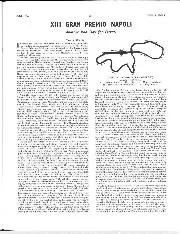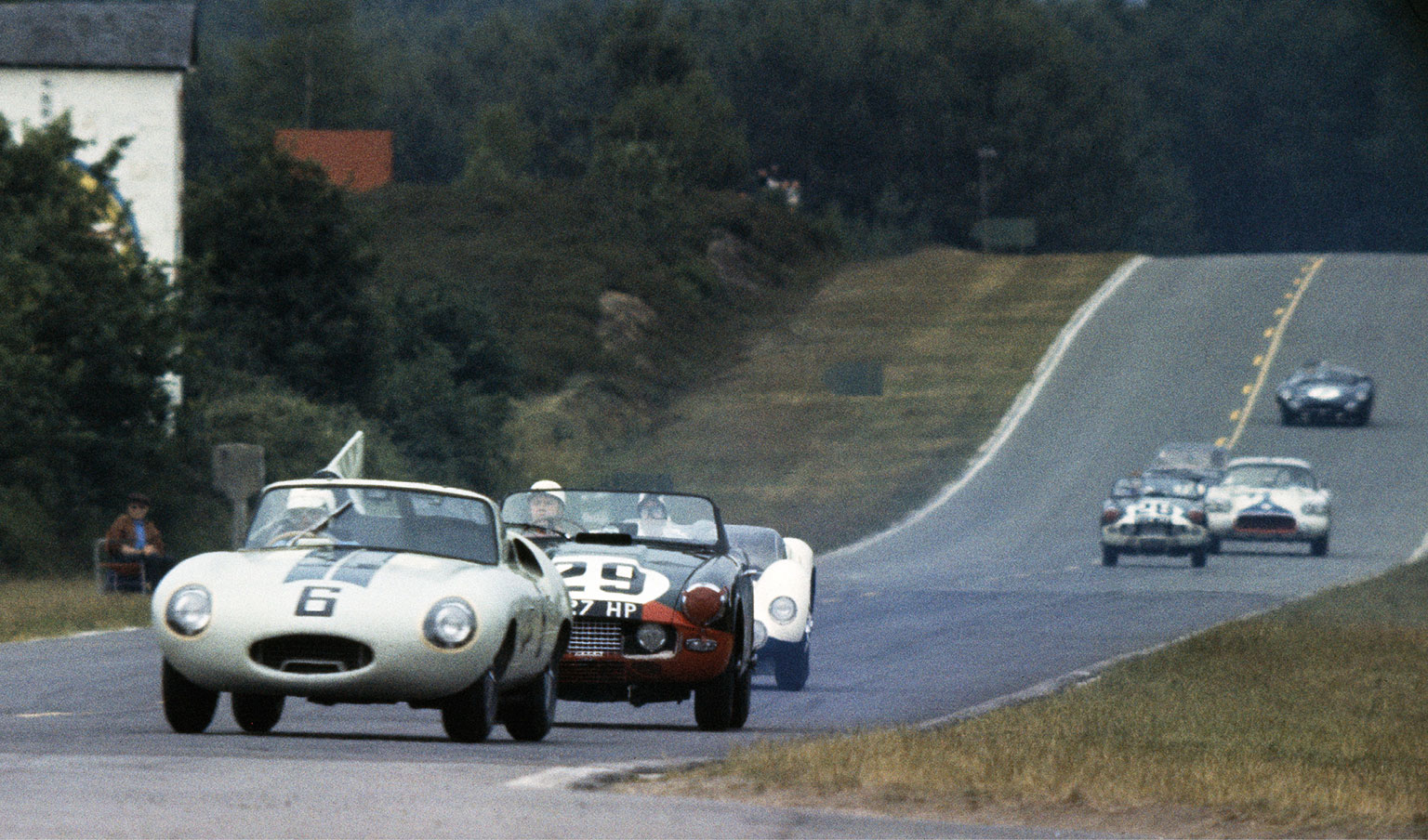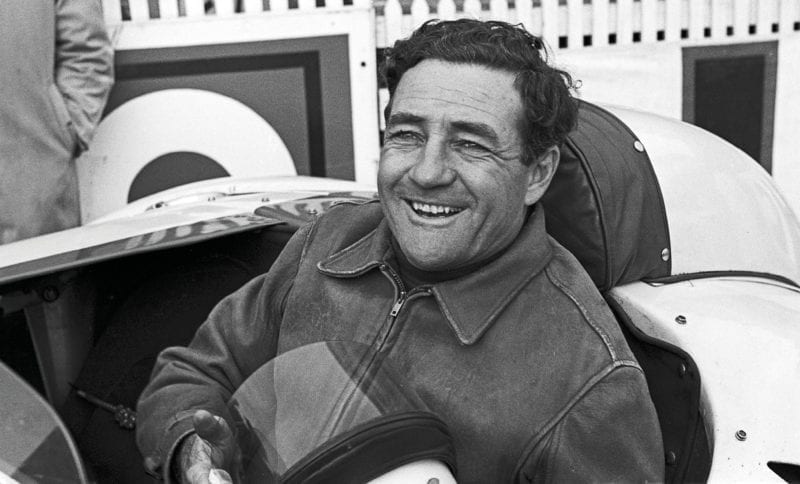
XIII Gran Premio Napoli
Another Bad Day for Ferrari Naples, May 6th. It seems that neither the English nor the Italians can ever take any notice of one another's calendar, for once more the…

Cunningham returned to Le Mans in 1960 with Jaguar’s E2A prototype, driven by Gurney/Hansgen
When Briggs Cunningham died in 2003, he was to most Americans the man who captained his own boat to Americas Cup glory, but in our world, he is the man who strove for an all-American victory at the Le Mans 24 Hours. That he never managed, but his racing exploits invoked admiration for a man with courtesy and manners that harked back to an earlier era.
Accepting that his marque was not going to take that Gallic prize, and that as a manufacturer it was losing money at a level which even a millionaire couldn’t stomach, Cunningham made the sensible choice to follow the prize money. At the time Jaguar led in sports car racing, so it was towards Browns Lane that he bent his efforts. Phillip Bingham focuses this book largely on this link.
“They were called America’s richest couple. Briggs’s new SSK Mercedes was delivered by Rudolf Caracciola”
There’s a wonderful shot in here of newly-married Briggs standing by an aeroplane, dressed in a thick bearskin coat. It sums up the life he was born into: the right places, the right people, and the bank balance to match. True, he had to wait until he was 40 to inherit the bulk of his father’s fortune, but in the meantime he married a millionaire’s daughter. On their wedding in 1929 they were called America’s richest couple: on their honeymoon Briggs’s new SSK Mercedes was delivered to their Paris hotel by Rudolf Caracciola. As Bingham says, the fact that the honeymoon coincided with the Wall Street Crash had less effect on them than on most people…
At this point Cunningham’s competitive instincts involved sailing; mother disapproved of driving, let alone racing, so it was kind to wait until she had passed on before he threw himself into a sport he had been excited by since riding in his uncle’s Hispano-engined Dodge. She died in 1949; by 1950 the wealthy sportsman had two entries sitting on the Le Mans start rank.
According to Bingham, Cunningham’s Le Mans dreams were fired by enthusiastic neighbours the Collier brothers and their private race circuit in Westchester County. Certainly, Cunningham was interested only in road racing on the European model, as a core part of that American sports car racing world who could afford European vehicles such as Ferraris and Porsches. It was a dangerous world, its circuits first comprising public roads through trees, houses and wheel-grabbing kerbs, though safety views differed: included here is a brave quote from a 1950s Torrey Pines programme: “The dangerous part about road racing is YOU the SPECTATOR!”

All smiles: Cunningham-entered C4-R took third at Le Mans in 1954; Briggs drove his entry to fifth
Getty
Cunningham too imported Ferraris, Maseratis and Porsches to race with plenty of success but feeling this was borrowed glory he set himself to that All-American goal. Although it’s not the core of the book, Bingham spends generous time on the Cunningham cars that tackled Le Mans, where despite some tantalising promise (a third in 1954) and success elsewhere, it became clear that the road was increasingly uphill, and the home-build dream ended. Illuminating the complex background to this change of tack, Bingham points out that there were major tax implications if Cunningham continued such a financial loss, while Jaguar faced problems with its New York importer. So the 1955 announcement that Cunningham would both import Jaguars and race them was a perfect moment of serendipity. And there was no need to make it public that Cunningham’s acquisition of three D-types depended on his agreeing to stop building his own cars, tiny as their threat was to the British maker.
It was Briggs’s luck to step in at the peak of D-type success but that of course was brief, and soon he was eyeing up other marques, finally opting for Listers with Jaguar power, maintaining that all-important Coventry connection – the road cars streaming through his dealership. He was the perfect partner to try racing E2A, that half-step to the E-type that figured so large in Cunningham’s story. Not surprisingly, when E2A entered Le Mans in 1960, it was a ‘private’ entry painted white and blue in the best tradition of plausible deniability if it broke. Which it did – the 3-litre XK engine never came right.
There’s interesting correspondence here between Cunningham and Lofty England, who it turns out steered rising Dan Gurney to the US team, and later once Cunningham was racing E-types seriously, though it was not a contender for that elusive Le Mans victory.
Despite the Jaguar theme, Bingham gives plenty of room to Cunningham’s other efforts – the Corvettes, Maseratis, Coopers and many more among his stable. There’s plenty of technical info here which is found in other books (especially Porter titles) and some diversions which aren’t relevant, such as the story of the missing Kjell Qvale Lightweight E which had nothing to do with Cunningham, but all the team’s racing is detailed. Browns Lane must have been delighted with what Cunningham did for the E-type in the US.
Box-outs on various themes appear, about Cunningham’s drivers such as Walt Hansgen, John Fitch and Phil Walters, on circuits, and notably on his right-hand man Alfred Momo, who oversaw the preparation of over 100 blue and white racers.
In 1920, Momo climbed onto the wing of a biplane over the Adriatic to mend a fuel line – the ‘you do what it takes’ attitude that made him a vital engineer, team manager and strategist for the Cunningham team.
I’d hoped for a bit more personal colour and views from the man himself, although an insert on Cunningham’s yacht racing includes his famous comparison of the sport to “standing in a cold shower tearing up $100-dollar bills”. But who except the sailors among you knew he invented a neat sail-trimming device still known as ‘a Cunningham’?
Despite the Jaguar angle, this is a sound overview of the Cunningham team’s exploits, under the man praised by perfectionist Phil Hill for his calm and thorough approach.

Phillip Bingham
Porter Press
ISBN 978-1-907085-81-9
£60